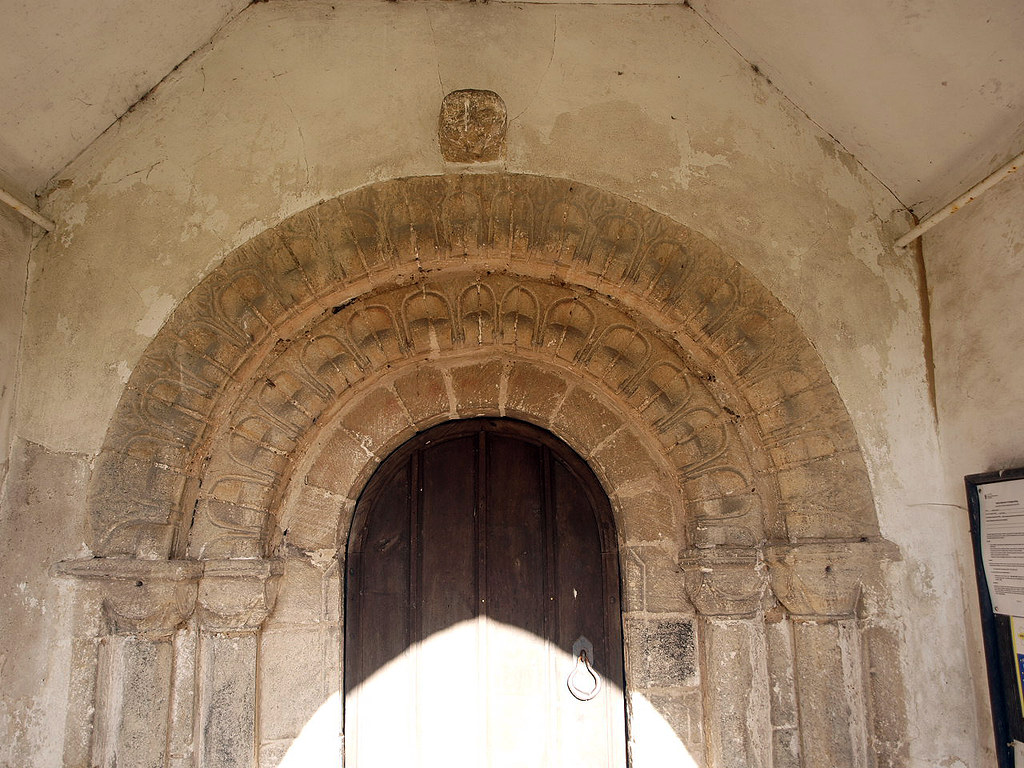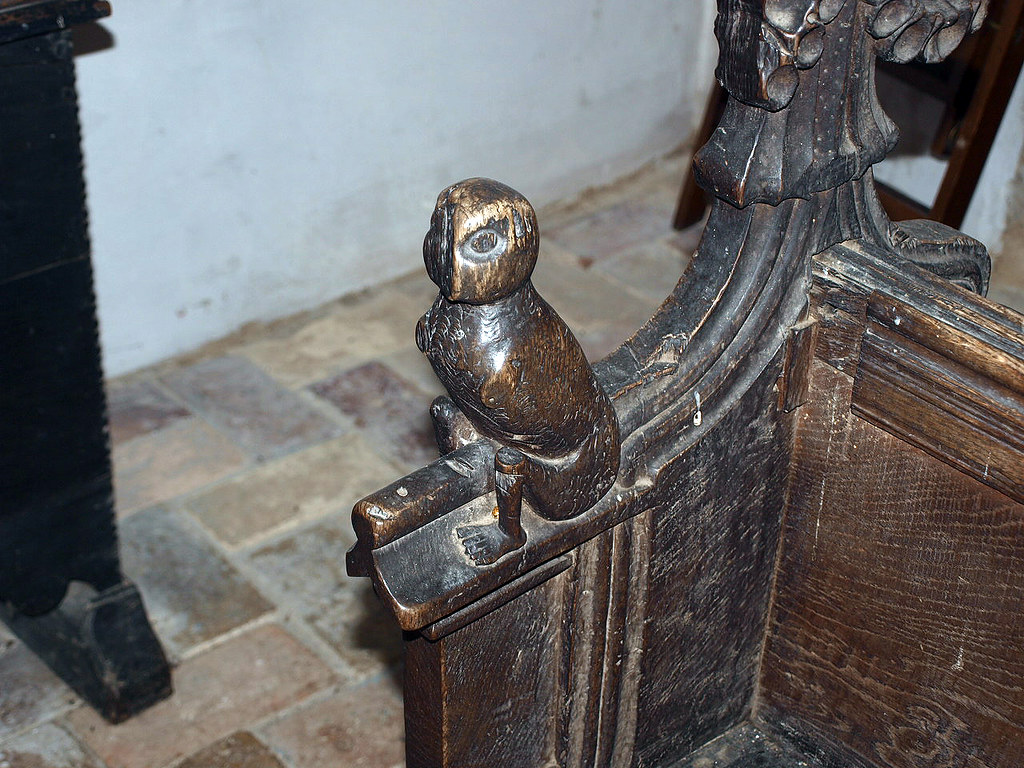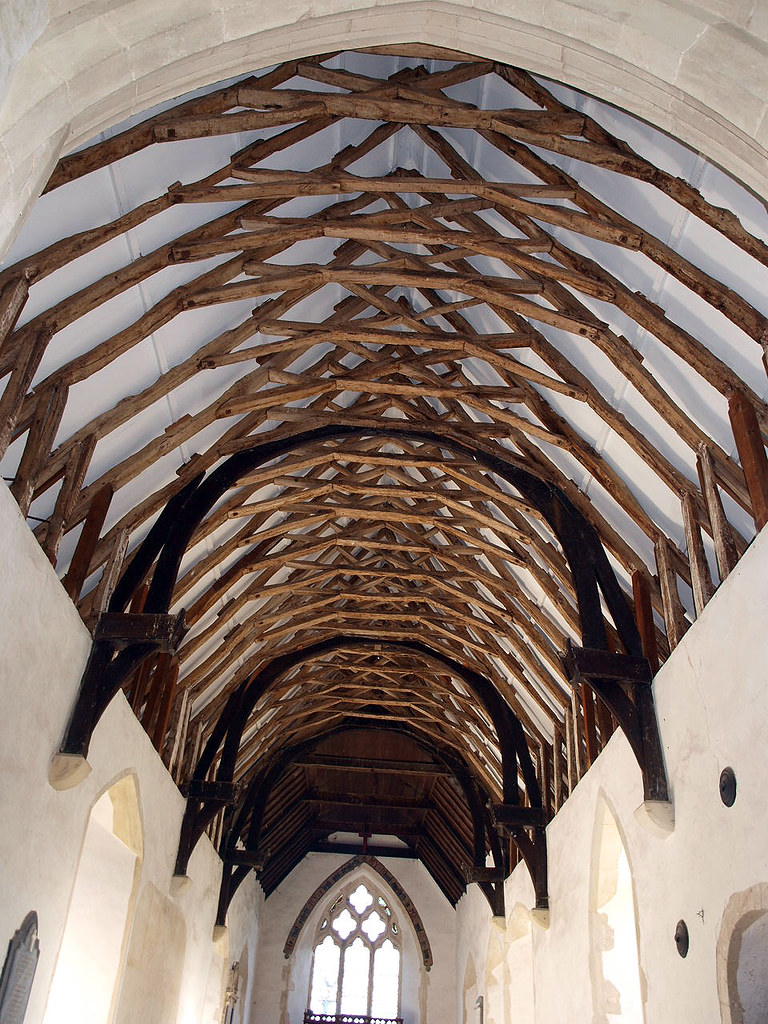ST ANDREW. Nave, chancel, and W tower; S porch. All c. 1300 and a little later. The only older element is the S doorway: Norman, with two orders of shafts, single-scalloped capitals, and arch with an unusual ornamental motif.
SAPISTON. It was here that little Robert Bloomfield did his first day’s work. Suffolk’s nature poet, he was a very small boy when he came to live on William Austin’s farm, half an hour’s walk from the cottage he was born in at Honington. A peaceful spot was the village then, and it seemed to us peaceful now, for we passed through it seeing only one man, and he asleep in his garden. Sapiston has a few pleasant houses on a wooded hill, where we look to Honington over green fields. It has a bridge over the Blackbourne stream, a group of ancient elms, and a 15th century church sharing the loneliness of a beautiful farmhouse. It has a fine Norman doorway with a stone face Robert Bloomfield must have looked at many times, and a Norman font with part of the iron ring to which the lock was fastened when the holy water was guarded against witches. The pulpit and oak reredos are 19th century, but the ancient stairs to the roodloft are still here, and the piscina is curious for having a big opening and a little one, a sort of pigeon-hole 500 years old.



No comments:
Post a Comment